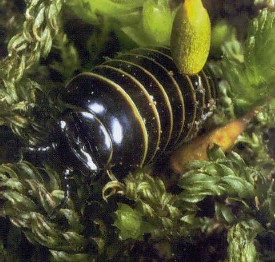

 |
|
|
|
Organisms in the soilIt is hard to believe that a single teaspoonful of soil contains over 4 billion micro-organisms, which is more than half of the planet’s entire human population!! Can you even begin to imagine how many you would find in a garden, or even your nearest park? Soil is populated by an amazing variety of living creatures, ranging from tiny microbes such as bacteria and fungi (microbeasts), to smaller insects such as centipedes and other animals such as worms (minibeasts) and larger animals such as moles and rabbits. Many of these organisms have very important functions. For example, certain microbes can break down resistant organic matter such as lignin, or chemicals such as toxins and pesticides. Others perform a similar process on minerals,thereby releasing nutrients for the plant. Bacteria, an essential group of soil micro-organisms, are responsible for much of the decomposition of organic material in soils. They are usually present in top soils in very large numbers and play an important role in converting more inert forms of nitrogen to ones that can more readily be taken up by plants. Earthworms are another vital species, because they help in the decomposition of organic matter in the soil, as well as improving vital functions such as aeration, water infiltration, and drainage. In fertile soils they can number 2 million per hectare or more! When it rains, worms will come to the surface so they don't get drowned. Go and look! |
